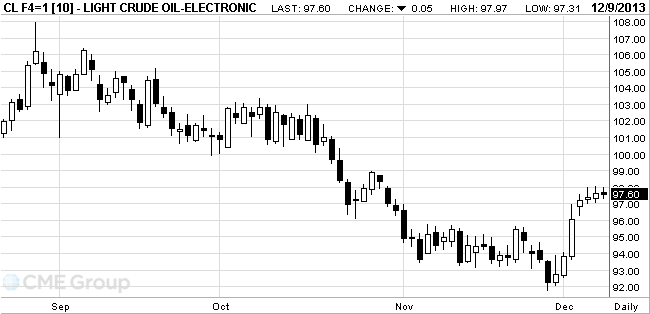- Brent crude dropped
Noticias del mercado
Brent crude dropped
Brent crude
dropped after
Futures
declined as much as 1 percent in
The
European benchmark traded at a $12.99 premium to WTI, heading for the narrowest
close since Nov. 19. The spread narrowed to $12.86 in intraday trading.
U.S. crude
supplies fell 5.59 million barrels to 385.8 million in the week ended Nov. 28,
the Energy Information Administration, the Energy Department’s statistical arm,
said Dec. 4. Refineries operated at 92.4 percent of capacity, the most since
September. Utilization rates usually pick up in December after maintenance is
performed during the lull in fuel use between the summer driving and the winter
heating periods.
WTI is
heading for its seventh straight gain, which would be the longest stretch of
increases since July 2012. Prices surged 5.3 percent last week on TransCanada
Corp. plans to start part of its Keystone XL pipeline to the
Brent crude
for January settlement decreased 81 cents, or 0.7 percent, to $110.80 a barrel
at 9:09 a.m.
WTI for
January delivery rose 16 cents to $97.81 a barrel on the New York Mercantile
Exchange. Volume was 44 percent lower than average. Futures climbed 27 cents to
$97.65 on Dec. 6, the highest close since Oct. 29.
